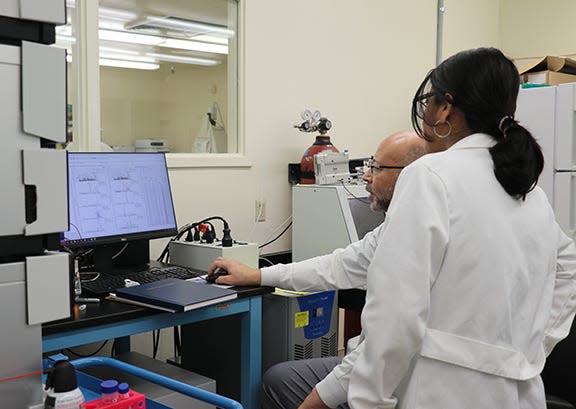Airborne exposure to red tide could have neurological effect, Florida study suggests
Researchers from the Roskamp Institute found new evidence suggesting that airborne exposure to red tide could have neurological impacts — especially for those with a previous history of migraine or chronic fatigue syndrome.
While respiratory symptoms are well-documented during red tide blooms, neurological symptoms haven't been examined in large populations, according to the institute. The more severe a red tide bloom, the more volunteers were likely to report respiratory symptoms. When neurological symptoms were reported, they usually occurred simultaneously with respiratory ones.
The study included more than 250 community volunteers from Sarasota, Manatee, Lee, Charlotte, and Collier counties.

RED TIDE: Florida red tide map
BEACH WATER QUALITY: See if it's safe to swim
ALGAL BLOOM MAP: Florida algal bloom over the last 90 Days
“During previous studies looking at how red tide toxins affected lung function, study participants sometimes reported headaches and we thought it was important to investigate this further,” said Laila Abdullah, a research scientist at the Roskamp Institute.
“Building on previous findings, we found that migraine sufferers reported headaches during red tide blooms. However, we did not expect that people would report NSP-like symptoms,” she said.
NSP, or neurotoxic shellfish poisoning, is an illness resulting from the consumption of red tide toxin-contaminated shellfish. Volunteers reported symptoms similar to NSP — such as nausea, vomiting, dizziness, or headaches — without eating tainted shellfish. Those with NSP-like symptoms also tended to have a previous medical history of migraine or chronic fatigue syndrome.
ICYMI: Mote Marine counting 2,700 turtle nests so far, making this season a top 10 record
Read More: Antisemitic flyers scattered in Sarasota neighborhood for the third time this year
The study also indicated that repeated airborne exposures could make otherwise healthy people more sensitive to red tide.
“Different people respond to the toxins in different ways — from not being affected at all to experiencing a range of severe symptoms,” Roskamp Institute Executive Director Michael Mullan said. “We don’t understand why that is the case nor do we know the dose levels of toxins that are needed to cause neurological symptoms. There is still much to understand about this toxin and the levels of threat it poses to human brain health.”
More than 76% of Florida's population lives along the coasts, according to the NOAA Office for Coastal Management. The U.S. Environmental Protection Agency also predicts that harmful algae blooms are likely to occur due to climate change's impact on warmer water temperatures and rising sea levels.
Stefania Lugli covers a little of everything for the Herald-Tribune. You can contact her at slugli@heraldtribune.com or dm her on Twitter at @steflugli.
This article originally appeared on Sarasota Herald-Tribune: Red tide: Airborne exposure can affect brain, study suggests
